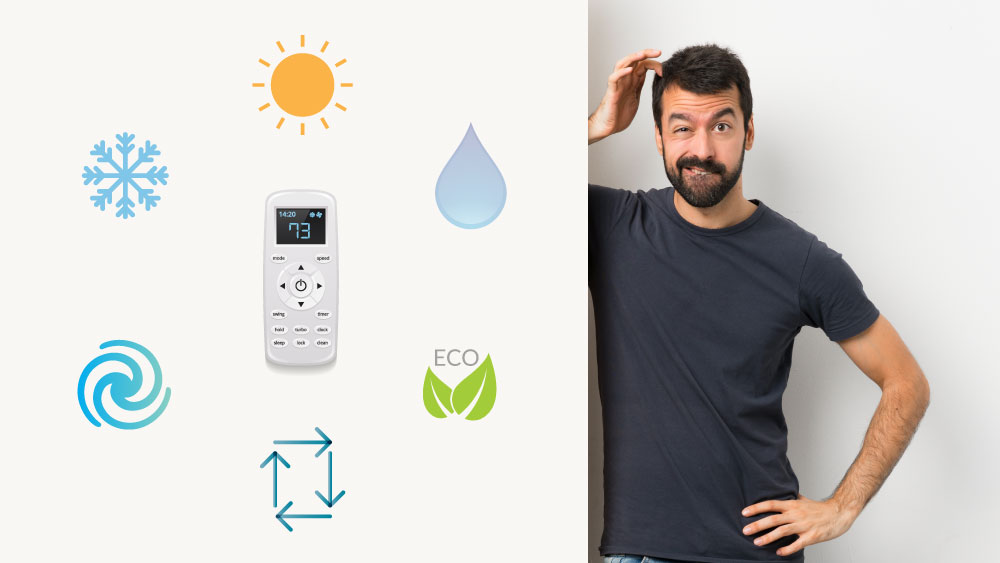Did you know that your air conditioner may also assist in maintaining a proper interior humidity level? You can regulate the moisture and humidity in your living environment by using the dry mode in AC.
Air conditioners can not only cool and heat your house, but they can also control the temperature and humidity in your living space. Modern air conditioners can dehumidify, ventilate, and even cleanse the air in addition to cooling and heating. You may have never used all of the settings and options on your air conditioner’s remote control. The dry setting on your air conditioner is one such underutilized feature.


What exactly is Dry Mode in AC?
The dry mode in AC, often known as “dehumidification,” is a function available on many ducted and split-type air conditioning systems that may lower humidity levels in a space. It is designed for days when the weather is humid but not too hot or chilly. It’s for days when the weather has a tropical feel to it yet is too chilly to employ cooling mode.
Do All Air Conditioner Units Have a Dry Mode?
Although the dry mode is a standard feature on many ducted and split system air conditioning systems, it is not available on all models. You may verify whether your machine has a dry mode by using the remote control.
What is the Function of Dry Mode in AC?
When the air conditioner is set to dry, it absorbs moisture from the air. This technique works similarly to a dehumidifier in that it lowers humidity and captures moisture in the air, producing fresh and breezy air.
The humid or moist air from the room is pulled into the air conditioning unit, where it is condensed in the evaporator to remove excess moisture before being discharged back into the room to assist reduce the overall moisture level.
Also, Read-How to Choose the Right AC Capacity?
What do the Different Modes in AC mean?
Cool Mode vs. Dry Mode vs. Fan Mode
The cool mode, as you may know, cools the air. It is usually regarded as the default setting of most air conditioners and is most likely the option you are most familiar with. This mode is mainly dependent on the compressor of the air conditioning unit; the energy output is determined by the temperature of your air conditioner as well as the fan settings.
The dry mode in AC, on the other hand, is not meant to deliver cold air into the room. It gets rid of excess moisture. Another advantage of the dry mode is that it uses less energy than the cool mode.
Additional Functions of Your Air Conditioner
Reverse Cycle / Heat Mode
It is best utilized to keep a pleasant temperature throughout the winter or on chilly days. The variety of heating solutions available might be perplexing. The decision is actually a lot easier to make than you would believe. Moreover, reverse-cycle air conditioning is much more efficient. Refrigerated air conditioning systems with reverse cycle mode are the greatest option for saving money and lowering utility costs.
Automatic Mode
The temperature and fan speed are set in auto mode based on the temperature sensed by the sensor. The thermostat’s set point is the temperature at which it is set. Unfortunately, the auto mode is less energy efficient than the other settings.
Consult a Professional HVAC Experts
Some of the advantages of dry mode in AC have already been mentioned, and it is clear that it is beneficial. Although being a useful tool, it has certain limits. You can operate your air conditioner more successfully at home or at work if you understand its capabilities and limits.
If you can’t figure out how to configure your air conditioner to offer you the optimum performance, it’s a good clue it’s time to call in a professional. A registered HVAC specialist may provide further information and assist you in properly setting the appliance to receive the most value for your investment.



